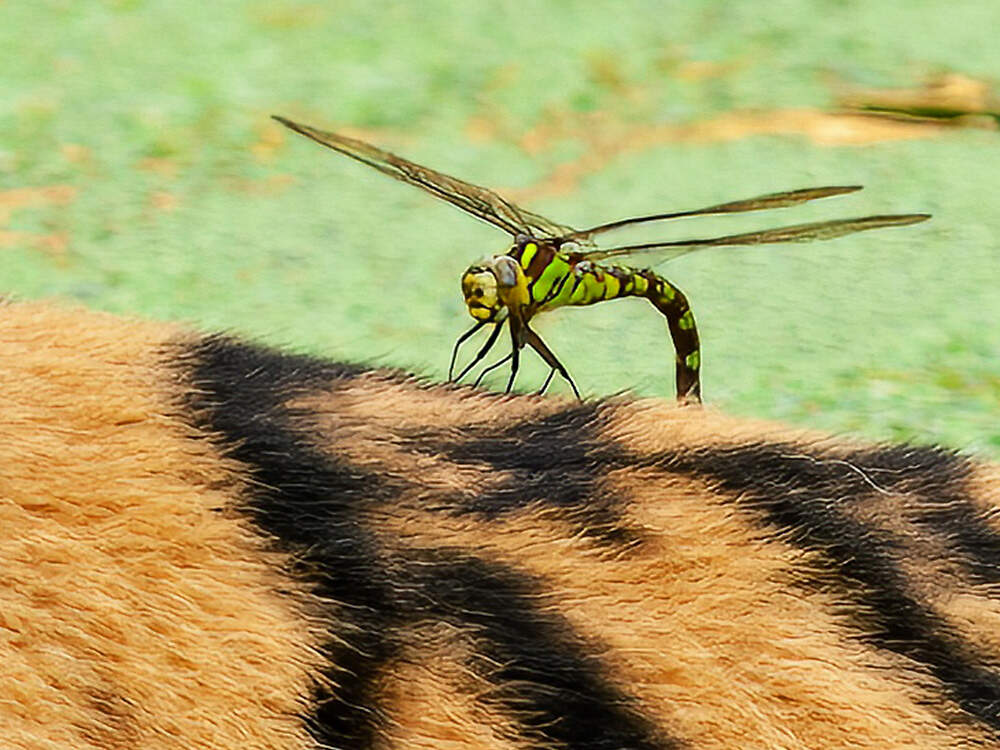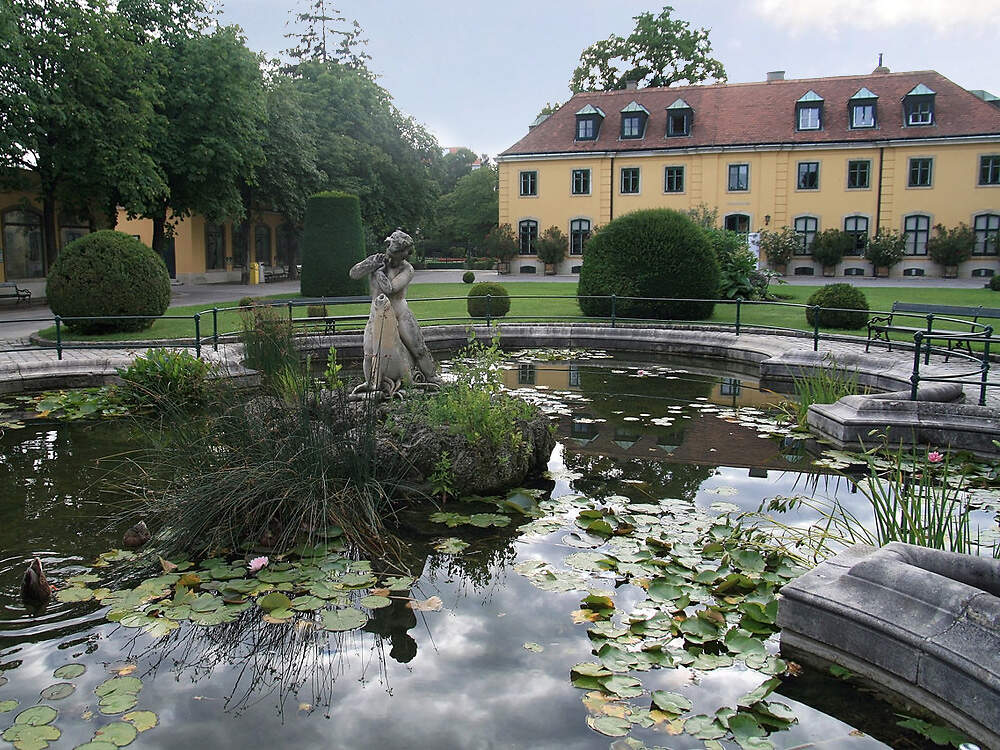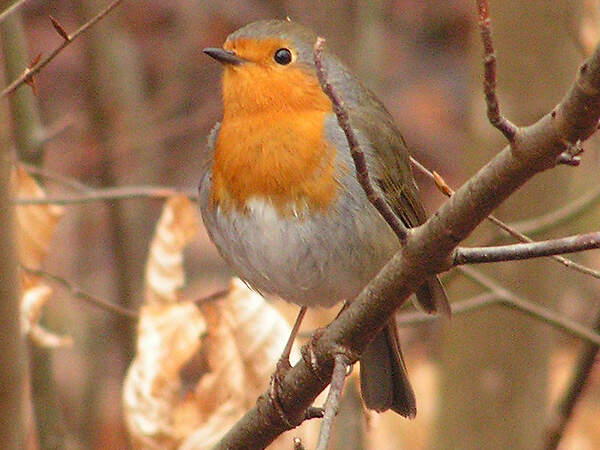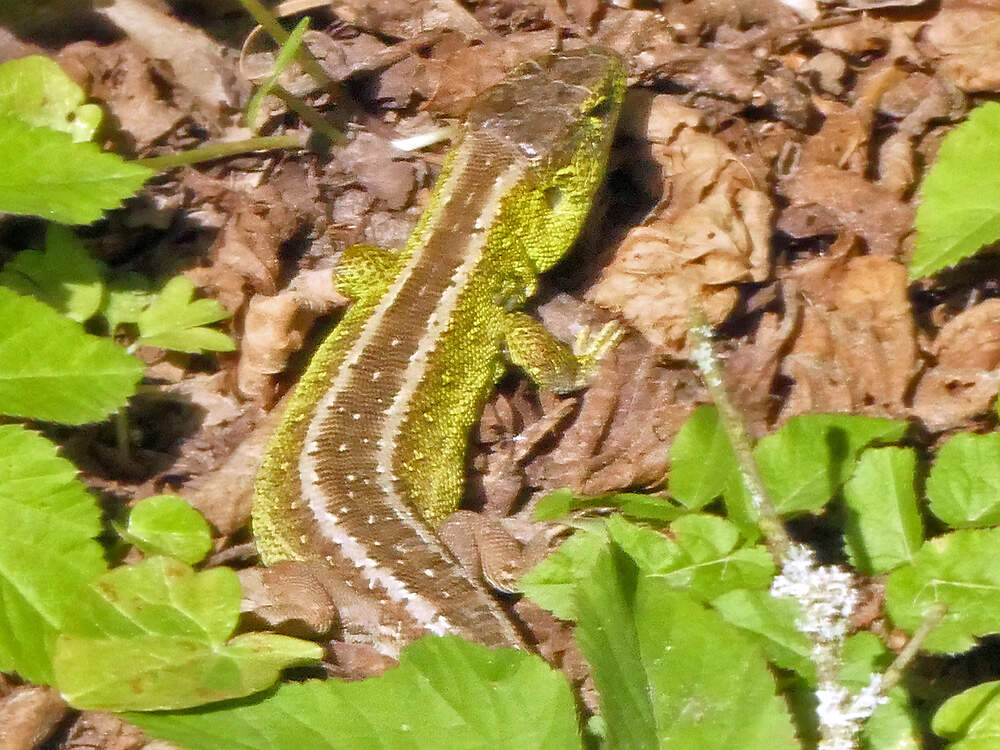Libellenvielfalt in Schönbrunn
Der Tiergarten Schönbrunn
als Refugium für 26 Libellenarten
|
|
Die Wasserschweine, Tiger und Nashörner im Tiergarten Schönbrunn haben etwas gemeinsam: Sie alle haben an ihren Teichen kleine Mitbewohner - Libellen. Wie viele verschiedene Libellenarten im Tiergarten zu finden sind, wurde 2022 im Auftrag des Zoos erforscht. Finanziell unterstützt wurde das Projekt von der Stadt Wien – Umweltschutz. Insgesamt wurde die Libellenfauna an 44 Gewässern im Tiergarten und der nahegelegenen Schwarzen Lacke in der Höheren Bundeslehr- und Forschungsanstalt für Gartenbau Schönbrunn erhoben. Dabei konnten an 30 dieser Gewässer 26 Libellenarten aus 8 verschiedenen Familien nachgewiesen werden, 23 Arten Klein- und 14 Arten Großlibellen. Bei neun davon handelt es sich gemäß der Roten Liste Österreichs um gefährdete Arten. Unter den gefährdeten Arten sticht die in Österreich vom Aussterben bedrohte Gabel-Azurjungfer (Coenagrion scitulum) hervor. In Schönbrunn konnte sie gleich an fünf Gewässern nachgewiesen werden, unter anderem am Teich der Großen Pandas, der einen sehr naturnahen Uferbereich aufweist. Im Tiergarten setzt sich das Artenspektrum aus Libellen mit sehr unterschiedlichen Ansprüchen zusammen. Auch die Diversität ist sehr hoch, 42 Prozent der Wiener Libellenfauna sind vertreten. Dies spiegelt das überaus vielfältige Angebot an aquatischen Lebensräumen im Tiergarten wider: vom barocken Brunnen vor dem Verwaltungsgebäude bis hin zum Pelikan-Teich. Libellen sind durch die Fragmentierung, Zerstörung und Verbauung aquatischer Lebensräume sowie durch die Belastung von Gewässern durch Chemikalien und Pestizide gefährdet. Besonders im städtischen Bereich werden Lebensraumverluste immer gegenwärtiger. Daher übernehmen naturnahe Gewässer im urbanen Raum, wie jene im Tiergarten Schönbrunn, für diese einzigartigen Insekten eine wichtige Rolle als Refugien oder Trittsteine. Vor allem Gewässer mit natürlich gestalteten, gut strukturierten Ufern und aquatischer Vegetation werden von vielen Libellenarten aufgesucht. Diese und weitere Erkenntnisse werden künftig in das Management des Tiergartens miteinbezogen. |
Literatur:
- FISCHER, I. & KARGL, V. (2022). Endbericht libellenkundliche Erhebung Tiergarten Schönbrunn & Schwarze Lacke 2022. MA 22, Wien.
- TIERGARTEN SCHÖNBRUNN - PM VOM 04.07.2023
Zurück zu Tierhaltung
Weiter zu
Zoos als Ersatzlebensräume
Zoos als Ersatzlebensräume
für einheimische Arten
|
|
Wie Josef REICHHOLF (2008) ausführt, findet der grösste Biodiversitätsverlust nicht etwa in den Städten statt, sondern im offenen Land mit seinen Fluren und Wäldern. Wo immer die Fauna und Flora von Großstädten untersucht wurde, stellte sich heraus, dass sie überraschend artenreich war, dass der Artenreichtum mit der Größe der Stadt zu- und nicht etwa abnimmt, und die Städte mit ihren Parks, Alleen, verwilderten Gärten, Flachdächern, Bahntrassen, Industriebrachen und sonstigen Ruderalflächen für manche Arten die letzte Rettung darstellten. Die offene Landschaft verliert dagegen an Arten, weil der Anteil an Monokulturen zunimmt, die Flächen gedüngt und Pestitide eingesetzt werden. Mit den mosaikartigen, naturnah gestalteten Flächen, in welche seine einzelnen Anlagen eingebettet sind, bietet innerhalb der Stadt namentlich der Zoo vielfältige Lebensräume für wildlebende Kleintiere und Pflanzen an. Diese Organismen werden aber kaum wahrgenommen und deren Artenzahl in Zoos war bis vor Kurzem weitgehend unbekannt. Die folgenden Seiten enthalten Informationen über den Zoo als Lebensraum für freilebende, heimische Tier- und Pflanzenarten und darüber, wie das Zoogelände für diese Arten aufgewertet werden kann. |
Literatur:
Zurück zu Tierhaltung
Weiter zu
PD - 14.02.2013; reaktiviert 04.07.2023
MATSCHEI, C. (2003)
Haltung und Zuchr von Goralen, Nemorhaedus (Smith 1827) in Zoologischen Gärten von Nordamerika, Europa und Singapur.
MILU, Berlin 11 (1): 43-56.
Zusammenfassung:
Haltungs- und Zuchtgeschichte der Gorale in Nordamerika, Europa und Singapur von 1957-2003 werden beschrieben. 3 Arten in 5 Formen werden nachgewiesen. Die derzeit erfolgreichste Unterart ist der Mittelchinesische Goral. Alle Tiere der westlichn Hemisphäre sind auf 7 Importtiere des San Diego Zoo in den 1980er Jahren zurückzuführen. Bis 2002 wurden in Europa, Nordamerika und Singapur mehr als 130 Geburten gemeldet. Einige Tiergärten der USA unterbrachen die Zucht Ende der 90er Jahre.
matschei-biblio
MERZ, E. (1978)
Male-male interactions with dead infants in Macaca sylvanus.
Primates 19: 749–754. https://doi.org/10.1007/BF02373640
Arbeit durchgeführt in der Montagne des Singes, Kintzheim
Abstract:
Infants ofMacaca sylvanus are often involved in male-male interactions. Very similar interactions occur also with dead infants. The present paper describes male-male interactions with dead infants and emphasizes similarities and differences between these and those involving live infants. Causation is also briefly discussed.
merz-biblio
BISSONNETTE, A., DE VRIES, H. & VAN SCHAYK, C. P. (2009)
Coalitions in male Barbary macaques, Macaca sylvanus: strength, success and rules of thumb.
Animal Behaviour 78 (2): 329-335. https://doi.org/10.1016/j.anbehav.2009.05.010
Arbeit durchgeführt im Affenberg Salem
Abstract:
Several quantitative models of coalition formation assume that a coalition is successful if the strength of the coalition is greater than the strength of the target, but unsuccessful otherwise. However, strong empirical evidence in favour of this hypothesis is still lacking. In this study, we provide an empirical test of this assumption in Barbary macaque males, by using a field-based estimate of individual competitive ability from which coalition strength is derived. Coalition success was determined for 90 coalitions composed of two partners and targeted at one male. Of these, 72.2% were behaviourally successful and 27.8% were unsuccessful. Asymmetry in strength was a significant predictor of coalition success, as this factor alone could explain up to 78.6% of coalition outcomes in the study group. Males behaved as if they were at least partially informed about the nature of this asymmetry. The targets of attacks by coalitions were more likely to counterattack as asymmetry in strength decreased, and coalition partners formed coalitions that produced on average a greater asymmetry in strength than would be expected by chance. However, we provide evidence that males may have used simple rules of thumb based on their knowledge of dyadic and third-party relationships, rather than estimates of asymmetry in strength per se. We conclude that competitive ability is an important factor in coalition formation in Barbary macaque males and discuss additional factors not included in this study, which may account for the unexplained outcomes.
bissonnette-biblio
AMICI, F., WIDDIG, A., VON FERSEN, L.. LOPEZ CAICOXA, A. & BONAVENTURA, M. (2021)
Intra-specific Variation in the Social Behavior of Barbary macaques (Macaca sylvanus).
Front. Psychol., Sec. Comparative Psychology 12. https://doi.org/10.3389/fpsyg.2021.666166
Arbeit durchgeführt in der La Montagne des Singes Kintzheim, im Tiergarten Nürnberg und im Zoo Cordoba.
Abstract:
Non-human primates show an impressive behavioral diversity, both across and within species. However, the factors explaining intra-specific behavioral variation across groups and individuals are yet understudied. Here, we aimed to assess how group size and living conditions (i.e., captive, semi-free-ranging, wild) are linked to behavioral variation in 5 groups of Barbary macaques (N=137 individuals). In each group, we collected observational data on the time individuals spent in social interactions and on the group dominance style, along with experimental data on social tolerance over food and neophobia. Our results showed that differences in group size predicted differences in the time spent in social interactions, with smaller groups spending a higher proportion of time in close spatial proximity, but a lower proportion of time grooming. Moreover, group size predicted variation in dominance style, with smaller groups being more despotic. Social tolerance was affected by both group size and living conditions, being higher in smaller groups and in groups living in less natural conditions. Finally, individual characteristics also explained variation in social tolerance and neophobia, with socially integrated individuals having higher access to food sources, and higher-ranking ones being more neophobic. Overall, our results support the view that intra-specific variation is a crucial aspect in primate social behavior and call for more comparative studies to better understand the sources of within-species variation.
amici-biblio
WIDDIG, A., STREICH, W. J. & TEMBROCK, G. (2000)
Coalition formation among male Barbary macaques (Macaca sylvanus).
Am. J. Primatol. 50 (1):37–51. https://doi.org/10.1002/(SICI)1098-2345(200001)50:1<37::AID-AJP4>3.0.CO;2-3
Arbeit durchgeführt im Affenberg Salem.
Abstract:
A coalition is formed when one animal intervenes in an ongoing conflict between two parties to support one side. Since support of one party is also an act against the other party, coalitions are triadic interactions involving a supporter, a recipient, and a target. The purpose of this study was to test which of three possible theories explains coalition formation among male Barbary macaques: 1) Males support kin to enhance their indirect fitness (kin selection). 2) Males support nonkin to receive future reciprocal support (reciprocal altruism). 3) Males pursue self-interests and immediately benefit via nonkin support (cooperation). Coalition formation was investigated among 31 semi-free male Barbary macaques in the Salem Monkey Park, Germany during the mating season. The results show: 1) Males intervened more often in dyadic conflicts in which a related opponent was involved and supported related opponents more than unrelated opponents. Close kin supported each other more often than distant kin. 2) Some evidence for reciprocal support was found. However, reciprocity was probably a by-product of targeting the same individuals for dominance. 3) Coalition formation among nonkin is best interpreted as cooperation, based on self-interests. Male Barbary macaques seem to intervene more often to stabilize and less often to improve their rank. Although our data were limited, the results revealed that kin support, reciprocal support, and cooperative support were all involved in coalition formation among male Barbary macaques.
widdig-biblio
PAUL, A. & KUESTER, J. (1996)
Infant handling by female Barbary macaques (Macaca sylvanus) at Affenberg Salem: testing functional and evolutionary hypotheses.
Behavioral Ecology and Sociobiology 39: 133–145. https://doi.org/10.1007/s002650050275.
Arbeit durchgeführt im Affenberg Salem
Abstract:
Assisting the genetic parents in the rearing of young, a widespread phenomenon in many birds and mammals, is usually regarded as an altruistic or mutualistic behavior. Infant handling by females other than the mother is also common in many primates, but due to high within- and between-species variation and limited knowledge about fitness consequences there is no consensus about its evolutionary and functional significance. Analysis of female infant-handling patterns and its reproductive consequences in three groups of semifree-ranging Barbary macaques revealed that nulliparous females significantly more often handled infants than parous females, but infant handling experience did not affect survival of their own first live-born offspring. Females interacted preferentially with closely related infants, but infant handling frequency improved neither infant survival nor maternal fecundity. Reciprocation of infant handling by mothers was rare. Although “aunting to death” occurred in the population, the hypothesis that infant handling serves to reduce the fitness of competitors was not supported. Limited evidence suggests that females at least sometimes use infants as strategic tools in the course of alliance formation. In concert with this poor evidence for a functional basis of the behavior, several lines of evidence support the hypothesis that infant handling evolved as a non-adaptive by-product of a strong selection for mother-offspring bonding. (1) Rates of infant handling were highest among females that experienced early infant loss. (2) Females caring for infants or yearlings of their own handled other infants significantly less often than females without dependent offspring. (3) Infant handling by females was most prevalent during the infants’ first month of life. (4) Both “aunting to death” and a successful adoption occurred irrespective of kinship relations. Although the by-product hypothesis appears to be the only one able to explain all results of this study, the apparent rarity of infant handling in non-female-bonded species suggest that kin selection is a possible alternative explanation for the evolution of female infant-handling in primates.
paul-biblio
PAUL, A., KUESTER, J. & ARNEMANN, J. (1996)
The sociobiology of male–infant interactions in Barbary macaques, Macaca sylvanus.
Animal Behaviour 51 (1): 155-170. https://doi.org/10.1006/anbe.1996.0013.
Arbeit durchgeführt im Affenberg Salem.
Abstract:
Unlike most Old World monkeys, male Barbary macaques frequently associate with and care for infants shortly after birth. Three functional hypotheses have been proposed to explain male–infant interactions in this and other species. (1) The ‘paternal investment hypothesis’ proposes that males invest in their own progeny or otherwise related infants, (2) the ‘mating effort hypothesis’ proposes males care for infants to increase their access to mothers, and (3) the ‘agonistic buffering hypothesis’ proposes that males use infants to regulate their relations with other males. These hypotheses were tested using data on male–infant interactions, paternity and sexual behaviour obtained during a longitudinal study on Barbary macaques living in a large outdoor enclosure. Paternity of 91 infants was determined by DNA fingerprinting. Hypothesis 1 was not supported, because males did not preferentially interact with closely related infants. Similarly, hypothesis 2 was not supported because male caretakers were not more likely to sire the next infant of the mother than non-caretakers. Hypothesis 3 was supported because (1) the direction of at least one type of triadic interactions was significantly biased towards higher-ranking males, (2) the patterning of triadic interactions was strongly dependent on the rank distance between the males, and (3) interaction frequency increased significantly during periods of high inter-male tension. While kin relations were unimportant, the use of infants familiar with the opponent suggests that males make use of their knowledge of relationships between other group members. Beyond agonistic buffering, triadic interactions may serve an important function in coalition formation.
paul-biblio
PAUL, A. & THOMMEN, D. (1984)
Timing of Birth, Female Reproductive Success and Infant Sex Ratio in Semifree-Ranging Barbary Macaques (Macaca sylvanus).
Folia Primatologica 42 (1): 2-16. ISSN: 0015-5713 (Print); eISSN: 1421-9980 (Online).
Arbeit durchgeführt im Affenberg Salem.
Abstract:
Examined were 5 years of data on the reproduction of a semifree-ranging population of Barbary macaques (Macaca sylvanus). In this seasonally breeding species – birth season: mid-March to beginning of August – primiparous 4-year-old females gave birth significantly later in the year than older primiparous and multiparous females, respectively. Multiparous females without an infant from the preceding season gave birth significantly earlier than females who had raised an infant. 88.4% of birth intervals were approximately 1 year, 11.6% about 2 years. Infant loss did not influence the length of the interbirth interval, but after the birth of the next surviving infant the interval was significantly longer. The interval following the 1st infant was significantly longer than after subsequent infants. After the birth of daughters primiparous females had markedly longer birth intervals than after the birth of sons. Infant mortality was 9.1%. Neonatal mortality was influenced by rank and parity of the mother and sex of the infant. Allomothering and aggression by older group members are thought to be the main causes of infant mortality. Female reproduction rates were not dependent on rank. High-ranking females, however, bore their 1st infant significantly earlier than low-ranking females. Low-ranking females had more daughters than sons, in high-ranking females the reverse was found. Differences from findings of other species are discussed with regard to differences in social organization and the reproductive strategies resulting from them.
paul-biblio






